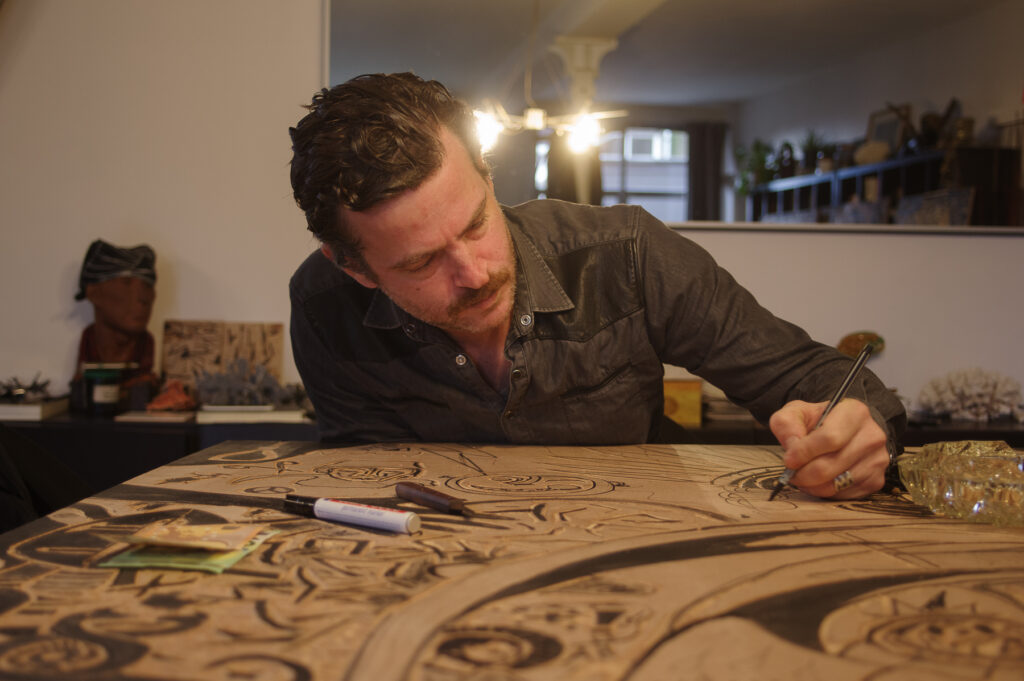#HELL
bruno Hellenbosch

#HELL
Bruno Hellenbosch
Born in 1977, in Brussels, Belgium.
Lives and works in Brussels.
Much like Pier Paolo Pasolini, Bruno Hellenbosch is fascinated by such seminal literary works as The Thousand and One Nights or The Canterbury Tales and by medieval iconography and art history in general. After completing his project on The Divine Comedy (which won the printmaking award, the Prix de la Gravure et de l’Image imprimée, in La Louvière, Belgium, in 2007), he embarked on a new adventure inspired by the numerical structure in Giovanni Boccaccio’s The Decameron, written more than six centuries ago. Organized around ten days, each bringing together ten tales told by ten different narrators, the book offered the Brussels-based artist an almost infinite number of possible visual and thematic combinations. The diversity of the short stories within The Decameron, narrated by ten people fleeing from plague-ridden Florence, is beautifully reflected in his work. With considerable freedom and stylistic variety, his images depict the destruction of values and ethics, and the immorality of those in power. Satirical, bawdy, irreverent and complex, the book invites endless formal exploration. It also contains numerous parallels with the modern world: class struggle, social mobility, power issues, sexuality, rural or urban exodus. Bruno Hellenbosch is not only sensitive to the entertaining qualities in Boccaccio’s work but also to its contemporary resonance.
He therefore decided to carve one hundred wooden blocks of the same format (100×70cm) conceived in groups of ten, like the ten days. Together they make up a monumental mural that stretches over 35 meters long. The artist chose to employ a traditional technique in a profoundly modern way, evoking the fact that The Decameron was considered highly innovative upon publication in Italy. Produced over more than four years, Hellenbosch’s large-scale work is also a way of revisiting the history of art and printmaking in particular. Among the images from Day 6, for instance, one can see, Picasso’s Don Quixote, Chardin’s Ray and a head by Basquiat, just a few of the many visual elements quoted from a wide variety of sources.